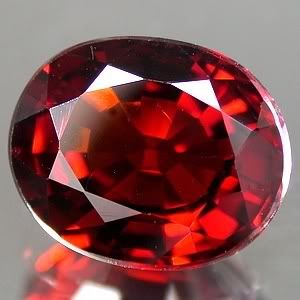Star Garnet
Star garnets, also known as Asteriated Almandine, are a special form of the gemstone garnet. While colored like other garnets they display a reflection-like image of a four or six pointed star caused by the inclusion of rutile needles (an effect known as Asterism).
Star garnet is an unusual form of garnet. Asterism, or the star effect,is associated mostly with star sapphire and star ruby. But in fact a small of group of other gemstones can also exhibit this effect, though specimens are fairly rare. The other star gems include moonstone, quartz, spinel, citrine, diopside, emerald, chrysoberyl and garnet.
The star garnet was designated the official state stone or gem of Idaho in 1967. More precious than either star rubies or star sapphires, the Idaho garnet is usually dark purple or plum in color, with four rays in the star (occasionally the star has six rays, as in a sapphire).
Idaho’s nickname is “The Gem State.” The mountains of Idaho contain veins of gold, silver, lead, zinc, cobalt, copper, and many other rare minerals. Among these rare minerals are gems like the star garnet, jasper, opal, jade, topaz, zircon, and tourmaline.
Star garnets are usually opaque and colored a deep brownish red or a reddish black. Like all star gems, the star effect is caused by inclusions of rutile. But in order to display the star effect the rutile needles must have the right alignment to reflect light in a pattern forming a mult-ray star.
The star effect in most star garnets is subtle and requires the correct lighting to see the star clearly. The best lighting is bright sunlight in the middle of the day where the sun is directly overhead. Using a focussed light like a narrow beam halogen spotlight or a small flashlight that can be focussed to a narrow beam will also work. Then stand directly above the stone and look straight down to see the star.





